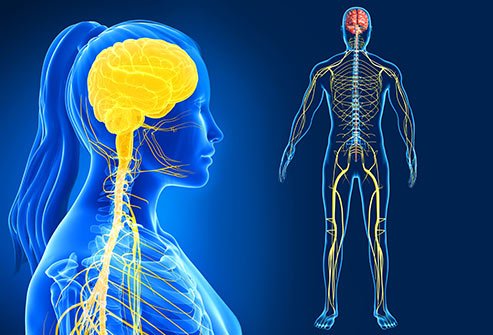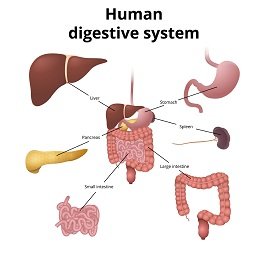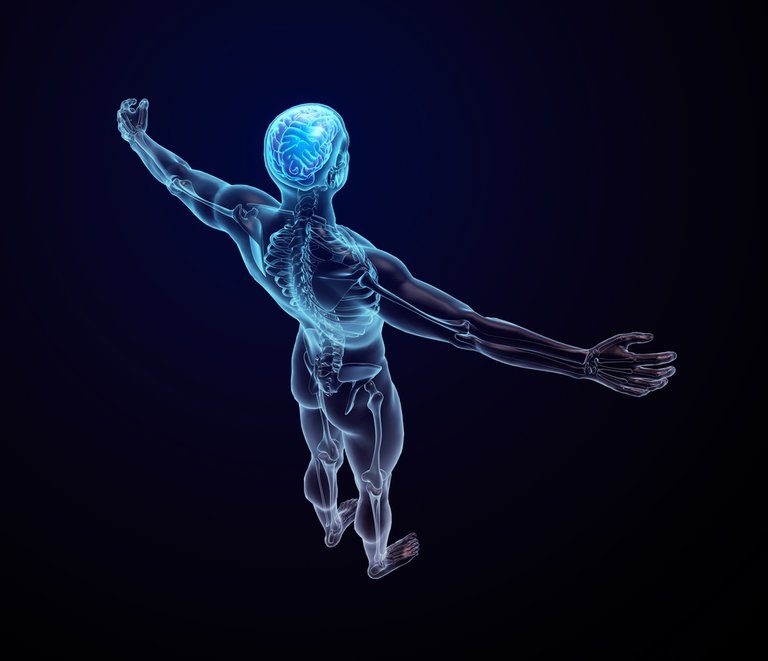A Systems Approach to Exercise Science: How exercise affects the body
What is a systems approach to exercise science...?

The field of exercise science uses what is known as a systems approach in their methods of research and study. A systems approach to exercise science is an important, integral way of looking at each of the body’s individual systems and how they work together and how exercise acts on these different systems. Exercise science maintains the idea that the body is a whole system and that the individual systems are what act in unison (in those with good health) to develop the overall human system and that different forms of exercise can alter the function of these systems.
I will now provide the primary function and an example of how exercise can influence the following bodily systems:
Nervous System– the primary function of this system is to receive and send signals through out the body. Prolonged and intense exercise has been shown to increase levels of cytokines in the central nervous system (CNS), with levels of IL-6 being particularly elevated. IL-6 is implicated in several pathways but primarily that of producing symptoms of fatigue with high levels in the CNS (Anish 2005).

Muscular System – the primary function of this system is to provide mobility, structure, and protection. Research has shown that trunk stability can be increased through activating the proper muscle groups using an exercise like the modified bridge/leg lift (Yoon 2018).
Skeletal System – the primary function of this system is to provide structure and protection. Weight bearing exercise has been shown to increase bone mineral density which can over time help prevent osteoporosis (Iwamoto 2017).
Cardiovascular system – the primary function of this system is to transport blood through the body which provides nutrients, gases, and removes wastes. Cardiac morphology and physiologic performance are improved in favorable manners through generalized exercise training. Moreover, exercise has been shown to impact typical cardiovascular disease risk factors including plasma lipids, especially high-density lipoprotein cholesterol (HDL-C), adposity, fasting glucose levels and type II diabetes control, and blood pressure lowering and hypertension control (Lavie 2016).
Pulmonary system – the primary function of this system is to exchange gases. Studies have shown that exercise increases alveolar macrophages which provide host protective and anti-inflammatory roles in the lungs (Veldhuizen 2019).
Urinary system – the primary function of this system is to regulate blood volume and composition, and release waste products. Research has shown that exercise, like yoga, increases the strength of the pelvic floor/wall, regulates the autonomic nervous system, and activates the central nervous system. These effects may help reduce lower urinary tract symptoms, such as incontinence (Sha 2019).

Digestive system – the primary function of this system is to breakdown food and absorb nutrients. Microorganisms in our gut communicate with our brain through the microbiota-gut-brain-axis using the vagus nerve to connect the enteric nervous system with the central nervous system. Recent studies in exercise science have shown that regular exercise has a positive relationship with the diversity of microflora in the gut. The microbiota has been linked to regulating mood as certain microbes have been shown to produce serotonin in the gut and an increased platelet level of serotonin is correlated with elevated moods, whereas a decreased level of platelet serotonin is correlated to lower moods and depression (Dalton 2019).
Endocrine system – the primary function of this system is to produce hormones that regulate growth and development, sexual function, reproduction, metabolism, sleep, and mood, among other things. Exercise has been shown to act as a stressor that interrupts the homeostasis of the endocrine system which can amplify and influence the actions of these hormones. While acute exercise is correlated with generalized positive impacts, chronic/excessive exercise is associated with deleterious hormonal states (Hackney 2015).
Immune system – the primary function of this system is to provide host protective responses. Moderate levels of repeated exercise have been shown to promote anti-inflammatory states through suppression of recruitment and activation of neutrophils and monocytes/macrophages of the innate immune system. These immune cells function as mediators of pro-inflammatory states through production of cytokines and reactive oxygen species which can alter function and damage tissues (Suzuki 2019).
Energy system – the primary function of this system is to provide energy to the body. During extended, maintained exercise, the body is using adenosine triphosphate (ATP) in aerobic conditions to provide energy. The body uses ATP-PC (phosphocreatine) to provide energy during short 10-20 second bursts. Anerobic conditions cause the body to use lactic acid as a means of energy. Anerobic conditions can only be maintained for a minute or so during intense training.

The systems approach to studying the body in regards to physical activity and exercise is then clearly imperative.
Exercise science shows that through the systems approach of study we are able to better understand and set guidelines for how to most optimally affect these bodily systems. Exercise science has shown that many diseases and illnesses can be effectively attenuated through the proper application of exercise.
Being able to further understand the relationship of the body systems and exercise effectively helps me in my own life in several ways. Studying these relationships gives me the ability to better conceptualize what is happening on a cellular level during exercise. I use this in my life to better shape the meals I prepare to provide my body with the optimal energy and nutrients to maintain and recover after exercise. Recognizing the association of the endocrine system and mood allows me to understand my own mood fluctuations. I apply this regularly when I notice my mood worsening and recognizing the need to exercise more regularly.
To conclude...
The body consists of multiple different systems of organs working in unison which, when in balance and healthy, allow for the human body to function. Exercise and physical activity are ways of stimulating these systems. Understanding how each of these systems is affected through engaging in exercise helps us individually better grow our awareness of our own bodily needs and how best to benefit them. Clinicians are able to use this knowledge in order to best prescribe the exercises which will help to heal their patients. Focused, intentional exercise shows great potential as a tool for healing when applied by clinical means. Knowledge is power, so learning empowers - Empower yourself today by learning how exercise affects your own body.

Works Cited
Anish, Eric J. “Exercise and Its Effects on the Central Nervous System.” Current Sports Medicine Reports, vol. 4, no. 1, 2005, pp. 18–23., doi:10.1097/01.csmr.0000306066.14026.77.
Dalton, Alyssa. “Exercise Influence on the Microbiome–Gut–Brain Axis.” Gut Microbes, vol. 10, no. 5, 31 Jan. 2019, pp. 555–568., doi:10.1080/19490976.2018.1562268.
Hackney, Anthony C., and Amy R. Lane. “Exercise and the Regulation of Endocrine Hormones.” Progress in Molecular Biology and Translational Science Molecular and Cellular Regulation of Adaptation to Exercise, 2015, pp. 293–311., doi:10.1016/bs.pmbts.2015.07.001.
Iwamoto, Jun. “A Role of Exercise and Sports in the Prevention of Osteoporosis.” Clin Calcium, vol. 27, no. 1, 2017, pp. 17–23.
Lavie, Carl J., et al. “Exercise and the Cardiovascular System.” Circulation Research, vol. 117, no. 2, Mar. 2015, pp. 207–219., doi:10.1161/circresaha.117.305205.
Sha, Kaihui, et al. “Yogas Biophysiological Effects on Lower Urinary Tract Symptoms: A Scoping Review.” The Journal of Alternative and Complementary Medicine, vol. 25, no. 3, 2019, pp. 279–287., doi:10.1089/acm.2018.0382.
Suzuki, Katsuhiko. “Chronic Inflammation as an Immunological Abnormality and Effectiveness of Exercise.” Biomolecules, vol. 9, no. 6, July 2019, p. 223., doi:10.3390/biom9060223.
Veldhuizen, Ruud A. W., et al. “The Effects of Aging and Exercise on Lung Mechanics, Surfactant and Alveolar Macrophages.” Experimental Lung Research, vol. 45, no. 5-6, 2019, pp. 113–122., doi:10.1080/01902148.2019.1605633.
Yoon, Jeong-Oh, et al. “Effect of Modified Bridge Exercise on Trunk Muscle Activity in Healthy Adults: a Cross Sectional Study.” Brazilian Journal of Physical Therapy, vol. 22, no. 2, 2018, pp. 161–167., doi:10.1016/j.bjpt.2017.09.005.
Image Sources


Earn Instantly For Writing Good Natural Health Content
FREE account by emailing [email protected]. Read more about us on our Welcome Page. We support writers sharing about herbalism, TCM, yoga, meditation, vegan and other healthy diets, as well as earth centred practices such as foraging, permaculture and biodynamics.
Please consider delegating to help keep this collective going. For any questions, come ask in our friendly Discord here !

LOVELAUGHTER&&XHAOS
Cat-herder aka Chief Bigstick
High Priest, Church of Erin
Erisian Ataxia Troupe : Caste of the Black Star

Nothing I didn't know already :P - I feel like a slug if I don't exercise. As my Dad said - 'move it or lose it'. However - when one understand body systems more, there's even MORE of a reason to do it, right?
Loving to see some solid science as a FOUNDATION for the choice to exercise - it is SUCH a pivot-point to better health! All the herbs and tinctures in the world are less than effectove if you don't get up and MOVE that lazy arse!! LOL 😆 I'm currently inspired to get a rebounder to use for running in our huge-well-ventilated-coolish house - cos running OUTSIDE with the current obligatory face mask isn't working.
Nice to see you posting - you have SO much to share!
#POSH https://twitter.com/Lotus_Medicine/status/1257522705676435456?s=20
#POSH https://www.facebook.com/permalink.php?story_fbid=1300857546769487&id=1003470073174904
Thanks for your contribution to the STEMsocial community. Feel free to join us on discord to get to know the rest of us!
Please consider supporting our funding proposal, approving our witness (@stem.witness) or delegating to the @steemstem account (for some ROI).
Please consider using the STEMsocial app app and including @steemstem as a beneficiary to get a stronger support.
Congratulations @alchemage! You have completed the following achievement on the Hive blockchain and have been rewarded with new badge(s) :
You can view your badges on your board and compare to others on the Ranking
If you no longer want to receive notifications, reply to this comment with the word
STOPDo not miss the last post from @hivebuzz: